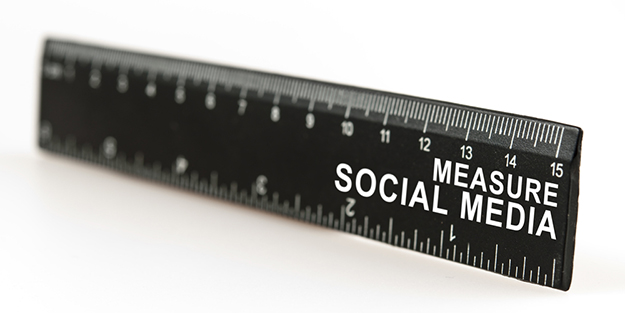Measurement and Engagement
 One of the biggest challenges when implementing a social media strategy of any kind is measuring success. Social media tools themselves offer plenty of analytics data, so seeing how you’re doing is relatively simple. However, it’s important to understand WHAT to measure. The tools will throw a lot of numbers at you, but how do you know when you’re really successful? Here are a few tips on how to set yourself up for success with measuring social media.
One of the biggest challenges when implementing a social media strategy of any kind is measuring success. Social media tools themselves offer plenty of analytics data, so seeing how you’re doing is relatively simple. However, it’s important to understand WHAT to measure. The tools will throw a lot of numbers at you, but how do you know when you’re really successful? Here are a few tips on how to set yourself up for success with measuring social media.
Start With Your Business Goals
All social media strategies should start with a clear definition of your business goals. What do you want to achieve through social media? What does success look like? Defining your goals up front will help you to know when you’ve been successful.
Try creating a few S.M.A.R.T. Goals (Specific, Measurable, Achievable, Relevant, Time-Bound).
For example, as a teacher, you might have a goal to get 10% more student engagement in the Fall semester. As a staff member, you might have a goal to get a 15% increase in registrations in Continuing Education programs between January and June.
Whatever your goals, make sure they are clearly articulated before you begin. Then, it will be much easier to implement a measurement strategy that will help you gauge how you’re doing.
All Numbers are Not Created Equal
It’s easy to get wrapped up in the “vanity metrics” that social media tools provide. However, the number of “Likes” on your Facebook Page or the number of followers you have on Twitter are not the most important things. Sure, they feed your ego, but does having 1,000 followers on Twitter mean you’re going to increase registrations or attendance? No.
If you’re clear on your goals, then you’ll be able to assess what metrics to pay attention to.
For example, if you’re looking to increase student engagement, you might start using a Twitter account to facilitate class discussions. You could measure the number of @replies, Retweets, and tweets posted with your course hashtag over time, and compare this to your engagement goals.
If your goal is to increase registrations, you could start posting registration information to your Facebook Page that includes links to your online registration system. You could then use a combination of your web site analytics and Facebook Insights to determine how many people went to your site and registered from the Facebook Posts.
Fans and followers are simply indicators of potential audience or popularity. When you dig down into the meaning behind your numbers, you are able to tell what is really happening and if you’re on the path to success.
Use a Dashboard
Various social media tools will give you different numbers. Between Google Analytics, Facebook Insights and HootSuite, you can determine a great deal. But be sure to compile your data in some kind of central location. An Excel spreadsheet is simplest. When you take your measurements, put the data gathered into your spreadsheet to make it easy to track your results over time.
Take Action!
Once your numbers start to reveal a story, you’ll be in a better position to make some decisions about where to go next. If you are seeing the numbers moving in the desired direction across the board, that’s great. What will you try now? However, if you’re not getting the desired results, perhaps it’s time to try something new or make some tweaks to your existing strategy.
Sometimes just wording your posts differently, or sending them out at different times in the day can change the results. Don’t be afraid to experiment, and take action on the results you see.
Use the Five W’s
Here are five important things to remember when measuring your social media efforts. Remember — it’s not always about the numbers! These things are important too:
- What people are saying about your brand.
- Where they are talking about your brand.
- When people are talking about your brand.
- Who is talking about your brand.
- Why people are talking about your brand.
Measurement Questions to Remember
As you roll out your social media strategies, continually ask yourself the following:
- How many people did we actually reach?
- Did the strategy create conversations?
- How does my strategy stack up to other marketing, promotional and advertising campaigns we are doing?
- Were our fans/followers engaged?